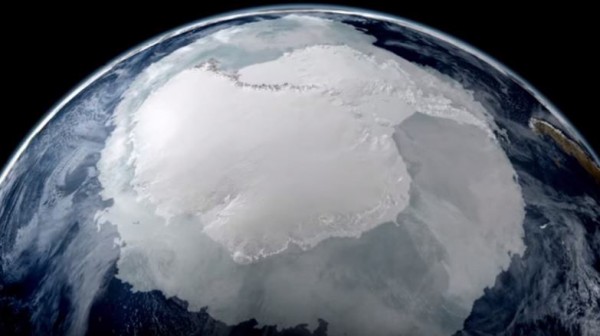By Ana Verayo, | April 28, 2016

If the iceberg finally breaks free, the largest portion with an approximate thickness of 350 metres (1,150 feet), will be floating on the ocean.(NASA)
There is apparently a massive lake underneath the ice sheet that is covering Antarctica, that contains rich, hidden biodiversity, unlike anything on Earth. Organisms are trapped in this frozen environment, making it conducive for them to thrive, undisturbed, for as long as millions of years.
Like Us on Facebook
With the help of radar data, scientists were able to detect this ribbon shaped lake where the findings were presented at the European Geosciences Union meeting last week in Vienna, Austria.
This lake is believed to be above a massive canyon system located in the eastern coastal region of Princess Elizabeth Land, stretching 87 miles long and 12 miles wide which is smaller than Lake Vostok, which is the largest subglacial lake in Antarctica.
This new lake's existence is soon to be confirmed, which coincidentally lies some 62 miles to the nearest research facility base, making this hidden lake more accessible for study compared to Lake Vostok, which is located in a very remote region of the icy continent.
According to Martin Siegert from the Imperial College of London, after collecting data, it revealed strange channels appearing to be linear on the surface which suggests that these are above some massive 1,000 kilometer long channels where there is also a relatively large subglacial lake as well.
Researchers from China and the United States investigated the area recently to collect radar images that penetrated the thick ice sheet. Scientists are now eager that their data will confirm the existence of this lake, after a review of their findings.
According to Bryn Hubbard from the University of Aberystwyth in the U.K., this region is also the last frontier of Antarctica where nobody conducted research here before, which means that this is very exciting news, however still tentative due to the pending full confirmation of this lake.
Subglacial lakes in Antarctica already revealed a myriad of life forms that have been in pristine state and buried under the ice for millions of years. Scientists also suggest that these microbes and organisms that have been frozen for millenia can also provide an idea of possible similar life forms on ice found on the moon, the polar regions of Mars or even Jupiter's moon Europa, which also holds a global ocean underneath its surface.
Fortunately, the research base is near this lake, which can make it easier for scientists to examine and study this hidden, frozen, underwater biology that has been trapped for million of years.
This new study is published in the journal, Geology.
-
Use of Coronavirus Pandemic Drones Raises Privacy Concerns: Drones Spread Fear, Local Officials Say

-
Coronavirus Hampers The Delivery Of Lockheed Martin F-35 Stealth Fighters For 2020

-
Instagram Speeds Up Plans to Add Account Memorialization Feature Due to COVID-19 Deaths

-
NASA: Perseverance Plans to Bring 'Mars Rock' to Earth in 2031

-
600 Dead And 3,000 In The Hospital as Iranians Believed Drinking High-Concentrations of Alcohol Can Cure The Coronavirus

-
600 Dead And 3,000 In The Hospital as Iranians Believed Drinking High-Concentrations of Alcohol Can Cure The Coronavirus

-
COVID-19: Doctors, Nurses Use Virtual Reality to Learn New Skills in Treating Coronavirus Patients







